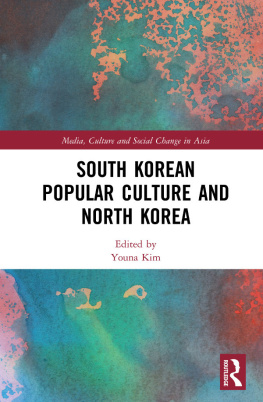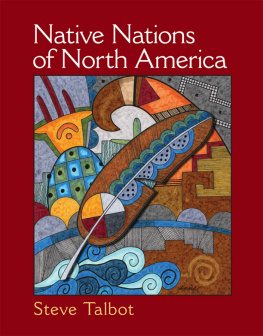DANGEROUS
SPIRITS
THE WINDIGO
IN MYTH
AND HISTORY
Shawn Smallman
This book is dedicated to Margaret, who always supported me and my work.
TABLE OF CONTENTS
chapter one
chapter two
Frontier Encounters with the Windigo, 16361916
chapter three
Missionaries and the Windigo, 18181960
chapter four
ACKNOWLEDGEMENTS
I OWE A GREAT DEBT to many people who helped me in this project. Anne Lindsay worked tirelessly to locate material in the Hudsons Bay Company Archives and shared her immense knowledge of fur-trade history. This project would not have been possible without her support. Amongst many other gifts, she introduced me to many key people. Stephen Boggs replied to my letter and shared his field notes from work on the Berens River, Manitoba, in the 1950s. Robin Wallace helped me access key material in the Provincial Archives of Alberta. Diane Lamoureux was invaluable in identifying the faith-based records at the Provincial Archives of Alberta, which are a priceless resource on religious history and ethnohistory. She was also vital in introducing me to other people who could help my research. Mary Flynn kindly sent me material from the Sisters of Providence Archive, an incredible historical source for western Canada. The staff at Library and Archives Canada helped me track down and obtain a great deal of material. Joan Petit at Portland State University identified some key Canadian newspaper resources available online.
Robert Brightman responded to endless emails, which touched on everything from Cree linguistics to cultural practices. He also read the chapter on myth, which his feedback greatly improved. I am immensely grateful for his support. Jeff Muehlbauer answered a question about Plains Cree linguistics through his outstanding blog (moniyawlinguist.wordpress.com). Jennifer Brown shared her work and insights during the early stages of this project, without which this would have been a much weaker book. John Long responded to emailed queries through Ann Lindsay. Nathan Carlson shared many materials, took part in endless discussions regarding the topic, and let me read his unpublished undergraduate thesis, which is the best study of the windigo phenomenon in Alberta. Cecil Chabot shared his article and critical information on the Eastmain windigo incident. Gilles Lesage shared information on resources in Manitoba.
Many people read drafts of this book. Evguenia Davidova read three chapters in their early stages and caught many errors. I hope to return the favour at some date. Michael Treleavan and Stephen Andes read the section on missionaries and helped to place Canadian events in a broader context. Jen Cyr, an outstanding PSU graduate student, produced the bibliography and edited the introduction and conclusion.
Grace Dillon and Kim Brown at Portland State University supported my application to the Ruth Landes Memorial Fund and took part in many conversations on this project. Sara Loreno produced the maps in this book and responded to a million minor queries. I also want to thank David Banis in Portland State Universitys geography department, whose help was critical for this work.
This book was made possible by financial assistance from the Ruth Landes Memorial Research Fund, a program of the Reed Foundation. Without that support, and the sabbatical that it funded, this book would never have been written. I also received a Creative and Scholarly Activities grant from the CLAS deans office at Portland State University.
Lastly, I want to thank my wife, who has spent eight years hearing endless accounts of the windigo. She supported me throughout this long journey, which included my absences on archival-research trips.
Physical Map of Canada SARA LORENO
Swift Runner, executed for cannibalism, Fort Saskatchewan, Alberta, 187980. LAC, GEORGE M. DAWSON, NATIONAL ARCHIVES OF CANADA FONDS, A51141
Painting of the interior of a Cree tent, March 25, 1820. LAC, ROBERT BELL, GEOLOGICAL SURVEY OF CANADA COLLECTION, PA-040077
Cree feast at Rupert House (now known as Wakaganish), Quebec, 1869. On February 16, 1900, word reached the Rupert House post that a windigo named Richard had hung himself two days before, after he had so terrified his family that they fled into a storm. F 2179-3-0-0-13, ARCHIVES OF ONTARIO
Clouston Gorge on the Eastmain River, Quebec, 1892. This is close to where a terrifying windigo incident took place in 1888, at the Eastmain HBC post. LAC, A.P. LOW, NATURAL RESOURCES CANADA FONDS, A038090
First Nations camp at Oxford House, Manitoba, 1890. It was here, over half a century earlier, that HBC chief factor Colin Robertson recorded the effects of a newfound religious fervour among the local First Nations population. LAC, ROBERT BELL, GEOLOGICAL SURVEY OF CANADA COLLECTION, PA-050926
A Cree family travelling along the Wabasca Trail, Alberta, 1912. LAC, G.H. BLANCHET, DEPARTMENT OF MINES AND TECHNICAL SURVEYS COLLECTION, PA-017459
Two Cree men in northern Alberta, circa 1936. LAC, DEPARTMENT OF INTERIOR FONDS, PA-040711
A Cree woman at Long Lake, Ontario, near the site of the HBC post, 1905. The Long Lake post experienced a windigo execution sometime between 1911 and 1916. C 275-1-0-6 [S 7644], ARCHIVES OF ONTARIO
Hudsons Bay Company Post, Lake Abitibi, Ontario, 1905. The First Nations people in this region tell a version of the heroic tale of a windigo killer known locally as Ka-an-watch. C 275-1-0-3 [S 7578], ARCHIVES OF ONTARIO
Next page



















